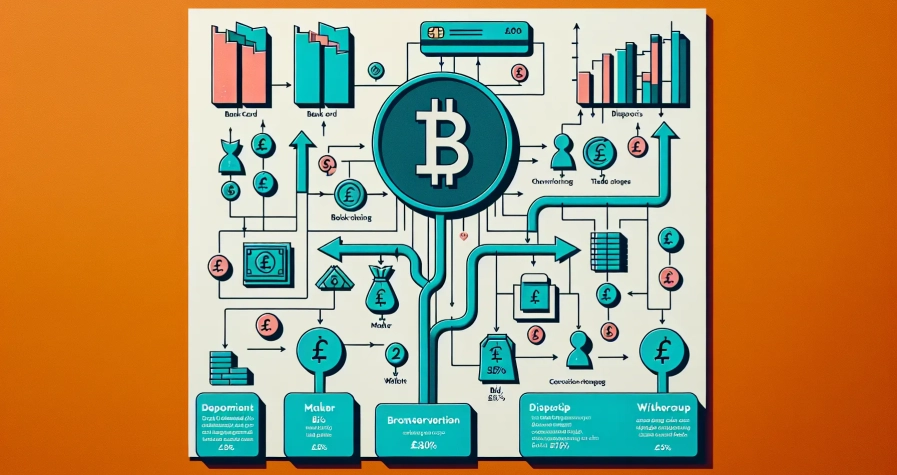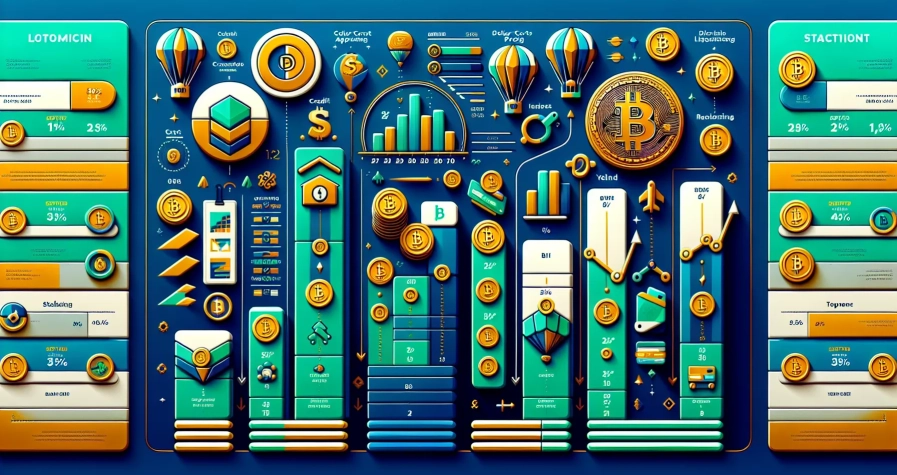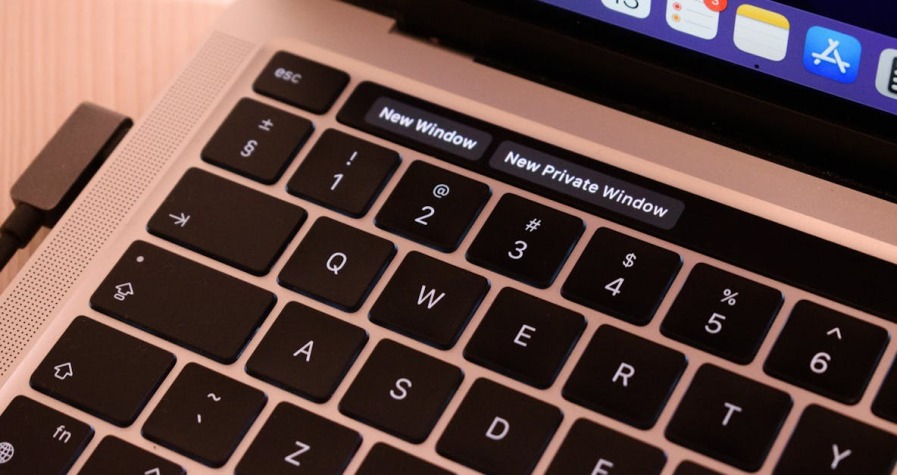You’ve probably heard the buzz around DeFi but aren’t quite sure what all the fuss is about. Decentralised Finance is revolutionising how we think about traditional banking and financial services, offering you unprecedented control over your money without the need for banks or middlemen.
At its core, DeFi represents a shift from centralised financial systems to peer-to-peer finance enabled by blockchain technology. Instead of relying on banks to process your transactions or manage your investments, you can access financial services directly through smart contracts and decentralised applications.
This innovative ecosystem lets you lend, borrow, trade, and earn interest on your digital assets 24/7 from anywhere in the world. Whether you’re looking to understand the basics or explore how DeFi might fit into your financial strategy, grasping these fundamentals will help you navigate this exciting new landscape with confidence.
What Is DeFi (Decentralized Finance)?
DeFi represents a revolutionary financial ecosystem built on blockchain networks that eliminates traditional intermediaries such as banks, brokers, and exchanges. You access financial services directly through smart contracts—automated programs that execute transactions when predetermined conditions are met. This decentralised approach transforms how you interact with money, investments, and financial products.
The DeFi ecosystem operates primarily on Ethereum and other blockchain platforms, creating an open financial infrastructure accessible to anyone with an internet connection. You can participate in lending protocols, decentralised exchanges, yield farming, and liquidity mining without requiring approval from centralised authorities. These applications run 24/7, providing continuous access to financial services regardless of your location or time zone.
Smart contracts form the backbone of DeFi protocols, replacing traditional financial institutions with transparent, programmable code. You interact directly with these contracts through decentralised applications (dApps), which provide user-friendly interfaces for complex financial operations. Popular DeFi protocols include Uniswap for token swapping, Compound for lending and borrowing, and Aave for liquidity provision.
| DeFi Component | Traditional Finance Equivalent | Key Benefit |
|---|---|---|
| Decentralised Exchanges (DEXs) | Stock exchanges | No KYC requirements |
| Lending Protocols | Banks | Higher interest rates |
| Yield Farming | Savings accounts | Enhanced returns |
| Synthetic Assets | Derivatives | Global accessibility |
Your DeFi interactions require a cryptocurrency wallet such as MetaMask or Trust Wallet to store digital assets and interact with protocols. You maintain complete control over your funds, as DeFi eliminates custodial relationships where third parties hold your assets. This self-custody model increases your financial sovereignty whilst requiring greater personal responsibility for security and private key management.
The total value locked (TVL) in DeFi protocols exceeded $40 billion in 2024, demonstrating significant market adoption and trust in decentralised financial systems. You can track protocol performance, yields, and risks through platforms like DeFiPulse and DefiLlama, which aggregate data across the entire ecosystem.
How Does DeFi Work?
DeFi operates through blockchain technology and smart contracts that eliminate traditional intermediaries from financial transactions. You interact with these systems through decentralised applications that execute automated agreements based on predetermined conditions.
Blockchain Technology and Smart Contracts
Blockchain technology serves as the foundational infrastructure for DeFi protocols, storing transaction data across distributed ledgers that maintain security and immutability. You access these networks primarily through Ethereum, which pioneered programmable smart contract functionality, though emerging platforms like Solana and Cardano now offer alternative DeFi ecosystems.
Smart contracts function as self-executing agreements with terms written directly into code that automatically enforce transactions when specific conditions are met. These contracts eliminate the need for central authorities by creating trustless peer-to-peer interactions that execute without human intervention.
The transparency of smart contracts allows you to review the code governing any DeFi protocol, ensuring complete visibility into how your funds are managed and transactions are processed. Open-source protocols enable developers to build upon existing infrastructure, creating an interconnected ecosystem of financial services.
Decentralised Applications (dApps)
Decentralised applications provide the user interface through which you access DeFi services, running directly on blockchain networks rather than centralised servers. You connect your cryptocurrency wallet to these dApps to interact with lending protocols, decentralised exchanges, yield farming platforms, and other financial services.
These applications offer greater security compared to traditional financial platforms because they operate through immutable smart contracts that cannot be altered by centralised entities. You maintain complete control over your assets throughout transactions, as dApps never require custody of your funds.
The permissionless nature of dApps means you can access any financial service without geographical restrictions, account approvals, or identity verification requirements. Popular dApps include Uniswap for token swapping, Aave for lending and borrowing, and Compound for earning interest on digital assets.
Key Components of DeFi
DeFi’s ecosystem consists of interconnected protocols that replace traditional financial institutions with decentralised alternatives. These components operate autonomously through smart contracts, enabling you to access comprehensive financial services without intermediaries.
Decentralised Exchanges (DEXs)
Decentralised exchanges enable direct peer-to-peer cryptocurrency trading without central authority control. You can trade digital assets globally through DEXs like Uniswap, SushiSwap, and PancakeSwap whilst maintaining custody of your funds throughout the transaction process.
DEXs operate using automated market makers (AMMs) that replace traditional order books with liquidity pools. You contribute tokens to these pools and earn trading fees when other users swap assets. Popular DEXs process billions in trading volume monthly, with Uniswap alone handling over $1 trillion in total volume since inception.
Key advantages of DEXs include:
- No KYC requirements – Trade immediately without identity verification
- Global accessibility – Access from anywhere with internet connection
- Self-custody – Retain control of your private keys and funds
- Transparency – All transactions recorded on public blockchain
- Reduced counterparty risk – No central entity can freeze your assets
Lending and Borrowing Protocols
Lending protocols allow you to earn interest on cryptocurrency holdings or borrow assets against collateral deposits. Platforms like Aave, Compound, and MakerDAO automate lending through smart contracts, eliminating traditional credit checks and loan officers.
You can deposit supported cryptocurrencies into lending pools and receive interest-bearing tokens representing your stake. Interest rates fluctuate based on supply and demand, with lending rates typically ranging from 2-15% annually depending on the asset and market conditions.
Borrowing requires over-collateralisation to protect lenders from default risk. You must deposit collateral worth 120-200% of your loan value depending on the protocol and asset volatility. Popular use cases include:
- Leveraging positions without selling existing holdings
- Tax optimisation through borrowing instead of realising gains
- Liquidity access whilst maintaining long-term investment exposure
- Arbitrage opportunities across different protocols and markets
Yield Farming and Liquidity Mining
Yield farming involves strategically depositing cryptocurrency across DeFi protocols to maximise returns through interest, fees, and token rewards. You can earn yields ranging from 5-100% annually by providing liquidity to decentralised exchanges, lending platforms, and other DeFi applications.
Liquidity mining specifically rewards you with governance tokens for supplying liquidity to protocol pools. These token incentives often exceed basic interest rates, creating opportunities for enhanced returns. Popular yield farming strategies include:
| Strategy | Description | Typical Returns |
|---|---|---|
| Liquidity provision | Supply tokens to DEX pools | 10-50% APY |
| Lending protocol deposits | Earn interest plus governance tokens | 5-20% APY |
| Staking governance tokens | Lock tokens for protocol voting rights | 8-25% APY |
| Cross-protocol farming | Move funds between protocols for optimal rates | Variable |
You can compound yields by reinvesting earned tokens back into farming positions, though this strategy requires active management and gas fee considerations. Yield farming carries smart contract risks, impermanent loss potential, and token price volatility that can affect overall returns.
Advanced farmers use aggregator protocols like Yearn Finance and Harvest Finance to automatically optimise yield farming strategies across multiple DeFi platforms simultaneously.
Benefits of DeFi
DeFi transforms traditional finance by delivering unprecedented accessibility transparency and cost-effectiveness to users worldwide. These core advantages make decentralised finance an attractive alternative to conventional banking systems.
Financial Inclusion and Accessibility
You can access DeFi services from anywhere with just an internet connection and a compatible wallet without requiring approval from financial institutions. This accessibility removes traditional barriers like credit checks geography restrictions and minimum account balances that often exclude unbanked and underbanked populations from financial services.
DeFi protocols offer microloans peer-to-peer lending and affordable cross-border remittances that enable you to access credit save securely and transfer funds cheaply. These services promote entrepreneurship and economic empowerment by providing financial tools to individuals who lack access to traditional banking infrastructure particularly in developing regions.
The permissionless nature of DeFi means you don’t need identity verification or credit history to participate in lending borrowing or trading activities. This global accessibility allows millions of people to engage with financial services regardless of their location or economic status.
Transparency and Security
Your transactions in DeFi are recorded on public blockchains making the entire system open to verification and audit by anyone. This transparency reduces fraud and manipulation risks that commonly occur in traditional finance where operations remain opaque and centralised.
Cryptographic security and smart contracts automate and safeguard your transactions preventing censorship hacking or unauthorised control of funds. You retain control of your private keys which enhances security by eliminating custodial risks associated with centralised financial institutions.
The immutable nature of blockchain records means your transaction history can’t be altered or deleted providing a permanent audit trail. This transparency allows you to verify protocol behaviour smart contract code and fund movements ensuring trust without relying on third-party assurances.
Reduced Intermediary Costs
You benefit from significantly lower transaction fees and faster processing times because DeFi eliminates middlemen like banks and brokers from financial operations. Peer-to-peer lending and decentralised exchanges allow direct asset transfer and trading reducing costs while expanding market participation.
DeFi innovations like flash loans provide instant unsecured loans that are repaid within a single transaction block enabling unique financial strategies impossible in traditional finance. These tools demonstrate how decentralised architecture creates new financial possibilities while maintaining cost efficiency.
Trading fees on decentralised exchanges typically range from 0.05% to 0.3% compared to traditional brokerage fees that can exceed 1% per transaction. Lending protocols also offer more competitive interest rates by removing banking overhead costs allowing you to earn higher yields on your cryptocurrency holdings.
Risks and Challenges of DeFi
DeFi operates through automated systems and decentralised protocols, but these innovative features introduce specific risks you must understand. These challenges range from technical vulnerabilities to regulatory complexities that can impact your financial activities.
Smart Contract Vulnerabilities
Smart contracts execute financial services autonomously once deployed on the blockchain, creating immutable code-based agreements. These contracts operate without human intervention, making bugs or coding errors particularly dangerous for your funds.
Exploits in smart contract code can result in complete loss of deposited assets. Hackers frequently target vulnerabilities in DeFi protocols, with notable incidents resulting in millions of pounds in stolen funds. You face permanent financial loss when these exploits occur, as blockchain transactions remain irreversible.
Common smart contract risks include:
- Coding errors that create unintended backdoors
- Flash loan attacks that exploit protocol logic
- Oracle manipulation affecting price feeds
- Reentrancy attacks that drain protocol funds
- Governance token exploits that compromise protocol control
Regulatory Uncertainty
DeFi’s permissionless nature creates significant regulatory challenges across global jurisdictions. Governments struggle to classify and regulate these decentralised financial services, leaving you exposed to changing legal frameworks.
Current regulatory gaps increase your exposure to fraud and money laundering schemes. You may face restricted access to DeFi services if your jurisdiction implements stringent regulations. Tax obligations remain unclear for many DeFi activities, potentially creating compliance issues.
Regulatory challenges affecting users:
- Unclear legal status of DeFi tokens
- Potential restrictions on protocol access
- Uncertain tax treatment of yield farming rewards
- Limited consumer protection frameworks
- Cross-border compliance complications
Market Volatility
DeFi protocols operate within cryptocurrency markets characterised by extreme price fluctuations. These volatile market conditions amplify your financial risks when engaging with DeFi services.
Cryptocurrency price swings can trigger liquidations in lending protocols, causing you to lose collateral deposits. Impermanent loss affects liquidity providers when token prices diverge significantly. Market crashes can reduce the value of your DeFi positions by 50-90% within hours.
| Risk Factor | Potential Impact | Example Scenario |
|---|---|---|
| Liquidation | Complete collateral loss | 20% price drop triggers liquidation |
| Impermanent Loss | Reduced LP token value | Token price divergence of 40% |
| Market Crash | Portfolio devaluation | 80% decline during bear markets |
| Slippage | Higher transaction costs | Large trades in low liquidity pools |
Additional technical barriers and complex user interfaces limit widespread adoption despite DeFi’s potential for financial inclusion. You must navigate sophisticated protocols that require technical knowledge and careful risk management strategies.
Popular DeFi Platforms and Protocols
Popular DeFi platforms represent the cornerstone protocols that power decentralised financial services across blockchain networks. These platforms have collectively secured over £32 billion in total value locked, demonstrating significant user trust and market adoption throughout 2024.
Lending and Borrowing Protocols
Aave operates as the largest lending protocol in DeFi, allowing you to deposit cryptocurrencies to earn interest whilst enabling other users to borrow against collateral. You can access over 30 different crypto assets for lending, with interest rates automatically adjusting based on supply and demand dynamics. The protocol offers unique features like flash loans and credit delegation, processing over £8 billion in total value locked.
Compound provides automated money markets where your cryptocurrency deposits generate compound interest through algorithmic interest rate protocols. You earn COMP governance tokens whilst participating in lending activities, with borrowing rates typically ranging from 2-15% annually depending on asset utilisation rates. The platform supports major cryptocurrencies including ETH, USDC, DAI, and WBTC.
Yearn.finance aggregates yield opportunities across multiple DeFi protocols, automatically optimising your returns through vault strategies. Your deposited funds get allocated to the highest-yielding opportunities available, with the protocol’s automated strategies consistently outperforming manual yield farming approaches by 20-40%.
Decentralised Exchanges (DEXs)
Uniswap facilitates direct peer-to-peer cryptocurrency trading through automated market makers (AMMs), eliminating order books and centralised matching systems. You can trade over 1,000 cryptocurrency pairs whilst earning fees by providing liquidity to trading pools. Daily trading volumes regularly exceed £1.5 billion across all supported assets.
PancakeSwap operates on Binance Smart Chain, offering significantly lower transaction fees compared to Ethereum-based alternatives. You can participate in yield farming, lottery games, and NFT marketplaces whilst benefiting from transaction costs under £0.20 per trade.
SushiSwap combines decentralised trading with additional DeFi services including lending, yield farming, and multi-chain asset bridging. The platform rewards liquidity providers with SUSHI governance tokens, creating additional earning opportunities beyond standard trading fees.
Yield Farming and Liquidity Mining Platforms
Curve Finance specialises in stablecoin trading with minimal slippage, making it ideal for large transactions between similar-value assets. You can earn trading fees plus CRV governance tokens by providing liquidity to stablecoin pools, with annual percentage yields ranging from 8-25%.
Convex Finance optimises Curve Finance yields by automatically compounding your CRV rewards and providing additional CVX token incentives. Your Curve LP tokens generate 10-50% higher returns compared to direct Curve staking, with over £3 billion in assets currently managed.
Multi-Protocol Platforms
| Platform | Primary Function | Supported Networks | TVL (2024) |
|---|---|---|---|
| Aave | Lending/Borrowing | Ethereum, Polygon, Avalanche | £8.2 billion |
| Compound | Money Markets | Ethereum, Polygon | £2.1 billion |
| Uniswap | DEX Trading | Ethereum, Polygon, Arbitrum | £4.8 billion |
| Curve Finance | Stablecoin Trading | Ethereum, Polygon, Fantom | £3.6 billion |
| Yearn.finance | Yield Aggregation | Ethereum, Fantom, Arbitrum | £650 million |
1inch aggregates liquidity across multiple DEXs, ensuring you receive optimal prices for cryptocurrency trades by splitting orders across various platforms. The protocol reduces slippage and maximises trading efficiency, particularly beneficial for large transactions exceeding £10,000.
These platforms operate through interconnected smart contracts that automatically execute financial services without traditional intermediary involvement. Your cryptocurrency wallet connects directly to these protocols, maintaining complete custody control whilst accessing sophisticated financial instruments previously available only through traditional banking systems.
The Future of Decentralised Finance
The future of DeFi holds transformative potential for creating a more inclusive, efficient, and fair financial system that disrupts traditional finance by removing costly intermediaries and providing global access. You’ll witness this evolution as DeFi protocols continue expanding beyond their current £32 billion total value locked, attracting both crypto enthusiasts and established institutions who recognise the technology’s revolutionary capabilities.
Institutional Adoption and Market Growth
Major financial institutions are increasingly exploring DeFi integration, signalling mainstream acceptance of decentralised financial protocols. Traditional banks and investment firms are developing strategies to incorporate DeFi services into their existing infrastructure, whilst regulatory frameworks gradually adapt to accommodate blockchain-based financial systems. This institutional interest drives significant capital inflows and validates DeFi’s long-term viability as a legitimate alternative to conventional banking.
Enhanced Security and Protocol Development
Future DeFi protocols will implement advanced security measures to address current vulnerabilities, including improved smart contract auditing processes and multi-layered security frameworks. Developers are creating more sophisticated testing environments and formal verification methods that reduce coding flaws and potential exploits. These improvements will strengthen user confidence whilst maintaining the decentralised nature that defines DeFi’s core principles.
Cross-Chain Interoperability
The future DeFi ecosystem will feature seamless interoperability between different blockchain networks, allowing you to access services across Ethereum, Solana, Cardano, and other platforms without complex bridging processes. Cross-chain protocols will enable asset transfers and smart contract interactions across multiple networks, expanding your access to diverse financial services and improving overall system efficiency.
Regulatory Clarity and Compliance
Regulatory frameworks worldwide will develop clearer guidelines for DeFi operations, providing legal certainty for users and protocol developers. Governments are working towards balanced regulations that preserve innovation whilst protecting consumers, creating a stable environment for DeFi growth. This regulatory evolution will reduce compliance uncertainties and enable broader adoption across different jurisdictions.
Integration with Traditional Finance
DeFi protocols will increasingly integrate with traditional financial systems, creating hybrid models that combine decentralised efficiency with established financial infrastructure. You’ll access DeFi services through traditional banking interfaces whilst maintaining custody control over your assets. This integration will bridge the gap between conventional finance and decentralised alternatives, accelerating mainstream adoption.
Conclusion
DeFi represents a fundamental shift in how you’ll interact with financial services moving forward. As blockchain technology continues to mature and regulatory frameworks develop you’re witnessing the early stages of a financial revolution that prioritises accessibility transparency and user control.
Whether you’re looking to diversify your investment portfolio or simply seeking alternatives to traditional banking DeFi offers compelling opportunities. The technology’s rapid evolution suggests that understanding these decentralised systems now will position you advantageously as they become more mainstream.
Your journey into DeFi requires careful consideration of both its transformative potential and associated risks. As the ecosystem continues expanding with institutional adoption and improved security measures you’ll find increasingly sophisticated tools that bridge the gap between traditional and decentralised finance.
Frequently Asked Questions
What is Decentralised Finance (DeFi)?
DeFi is a blockchain-based financial system that operates without traditional intermediaries like banks. It uses smart contracts on networks such as Ethereum to enable peer-to-peer financial transactions. Users can lend, borrow, trade, and earn interest on digital assets directly through decentralised applications, providing 24/7 access to financial services from anywhere in the world.
How does DeFi differ from traditional banking?
DeFi eliminates centralised authorities and intermediaries, allowing direct peer-to-peer transactions through blockchain technology. Unlike traditional banks, DeFi operates 24/7, offers global accessibility, requires no KYC verification, and provides higher interest rates. Users maintain full control of their funds through self-custody wallets, whilst smart contracts automate transactions without requiring approval from centralised institutions.
What are the main components of the DeFi ecosystem?
The DeFi ecosystem includes decentralised exchanges (DEXs) for peer-to-peer trading, lending and borrowing protocols for earning interest or accessing credit, yield farming for maximising returns, liquidity mining for providing market liquidity, and synthetic assets for global market exposure. All these components operate through smart contracts on blockchain networks.
What is yield farming in DeFi?
Yield farming involves depositing cryptocurrency across various DeFi protocols to maximise returns. Users provide liquidity to decentralised platforms and earn rewards in the form of interest, tokens, or fees. This strategy allows participants to optimise their earnings by moving funds between different protocols based on the best available returns.
What are the risks associated with DeFi?
DeFi carries several risks including smart contract vulnerabilities that could lead to fund losses, extreme market volatility affecting asset values, potential regulatory uncertainty, and the responsibility of self-custody requiring users to manage their own security. Additionally, newer protocols may lack sufficient auditing, increasing the risk of exploits or technical failures.
How do cryptocurrency wallets work in DeFi?
Cryptocurrency wallets in DeFi provide self-custody, giving users complete control over their funds without relying on third parties. These wallets interact directly with DeFi protocols through blockchain networks, allowing users to execute transactions, stake assets, and participate in various DeFi services. However, users are fully responsible for wallet security and private key management.
What is the total value locked in DeFi protocols?
As of 2024, the total value locked (TVL) in DeFi protocols exceeds £32 billion, demonstrating significant market adoption and trust in decentralised financial systems. This metric represents the total amount of cryptocurrency deposited across all DeFi platforms and indicates the growing confidence in decentralised finance as a viable alternative to traditional banking.
What does the future hold for DeFi?
The future of DeFi includes increased institutional adoption, enhanced security measures, cross-chain interoperability, and clearer regulatory frameworks. Major financial institutions are exploring DeFi integration, whilst developers focus on improving smart contract auditing and multi-layered security. Future developments will likely create hybrid models combining decentralised efficiency with traditional financial infrastructure.









